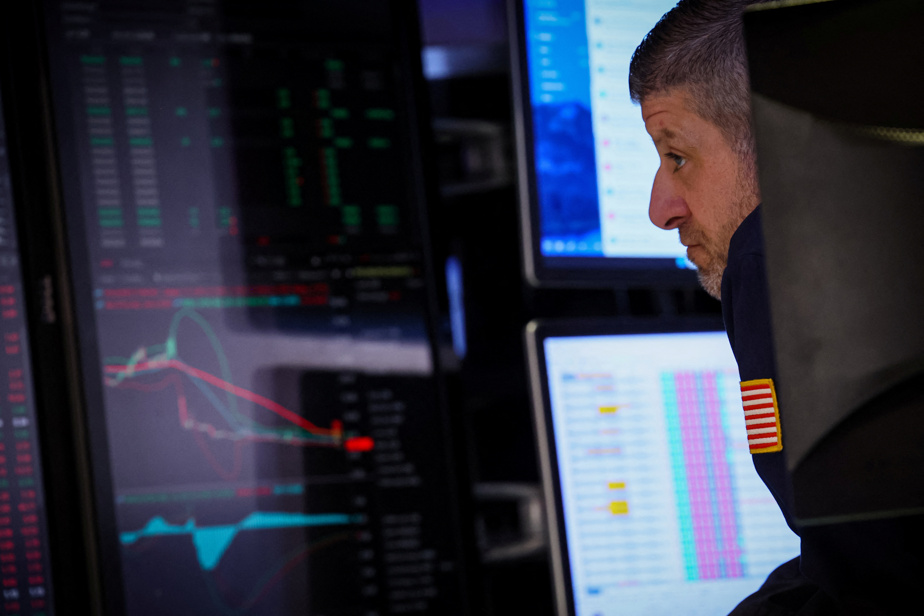(New York) The New York Stock Exchange was trading lower on Wednesday shortly after the opening, not very enthusiastic about company results and worried about seeing the economy continue to show poor health, which could prompt the American central bank (Fed ) to more firmness.
Around 9:50 a.m., the Dow Jones dropped 0.23%, the NASDAQ index lost 1.50% and the broader S&P 500 index dropped 0.91%.
For Patrick O’Hare, Wall Street is the scene of a standoff between operators positioned on the rise and brokers betting on a decline.
This fight is illustrated by the S&P 500, which oscillates around a major technical threshold, namely the average of the last 200 trading days.
So far, more than 80% of S&P 500 members who have published their quarterly results have performed better than analysts’ projections. “But the bar had been set low,” said Quincy Krosby, analyst at LPL Financial.
Two technology giants, Alphabet and Microsoft, experienced opposite fortunes on Wednesday, the day after the announcement of their results, separated by their performance in remote computing, the “cloud”.
Microsoft (+3.64%) further accelerated in this niche, while Google (-9.10% for Alphabet) disappointed a market accustomed to stratospheric growth rates, settling for 22% growth over one year.
“We are worried about seeing more disappointments in technology,” explained Quincy Krosby. “The market needs to be supported by big numbers” in this sector, according to her.
For Patrick O’Hare, Briefing analyst, “the volatility of the bond market is also a limiting factor” for stocks.
On Wednesday, bond rates rose again. The yield on 10-year US government bonds stood at 4.89%, compared to 4.82% the day before at the close.
In the absence of major macroeconomic indicators, the New York market was awaiting the publication on Thursday of the new growth estimate from the Fed branch in Atlanta, considered one of the most reliable.
The last update, in mid-October, announced an annual increase of 5.4% in American gross domestic product (GDP) in the third quarter, a figure that would have seemed improbable to most economists at the start of the year.
“The number is going to be high,” anticipates Quincy Krosby regarding the data from the Atlanta Fed. The publication of the official growth estimate by the US Department of Commerce is also expected on Thursday.
“This goes against the idea that the economy is slowing down,” insists Quincy Krosby, growth having been estimated at only 2.1% in the second quarter, still at an annual rate. “This weighs on the market, which is wondering whether or not the Fed will be patient” in terms of monetary policy, she underlines.
The operators were also worried, according to Patrick O’Hare, to see the House of Representatives still deprived of a president, due to lack of consensus within the Republican majority, as a crucial deadline approached.
Congress has until November 17 to vote on the annual budget, failing which the American government will be forced to suspend part of its activities, a mechanism called a “shutdown”.
On the stock market, Boeing lost altitude (-1.99%) after announcing a quarterly net loss greater than expectations and a downward revision in the delivery rate of its 737 aircraft.
The aircraft manufacturer nevertheless confirmed its cash flow estimate for the entire financial year, as well as its forecast for deliveries of 787 for the year.
Snap (+1.64%) benefited from a return to growth (+5%), after two consecutive quarters of decline in its turnover.
The parent company of the social network Snapchat nevertheless continues to post heavy losses. She also warned that many advertisers suspended their advertising spending after the outbreak of war between Israel and Hamas.
